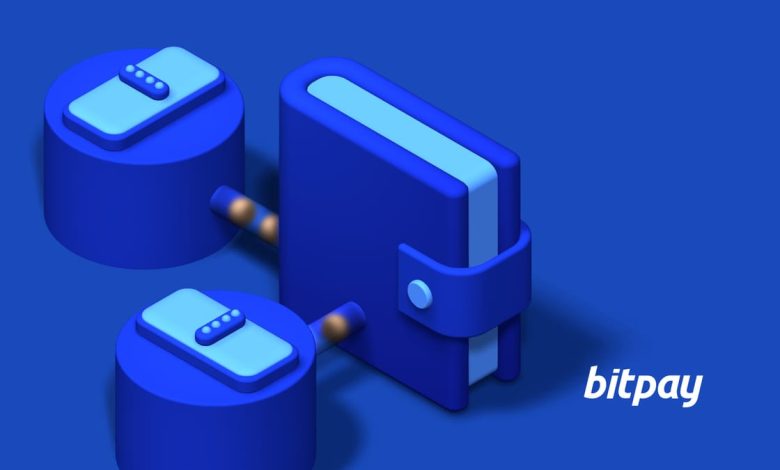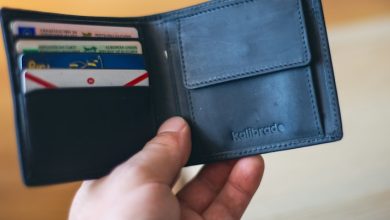How to Use Multi-Signature Wallets

- Understanding Multi-Signature Wallets
- Benefits of Using Multi-Signature Wallets
- Setting Up a Multi-Signature Wallet
- Best Practices for Securing Multi-Signature Wallets
- How Multi-Signature Wallets Enhance Security
- Common Mistakes to Avoid When Using Multi-Signature Wallets
Understanding Multi-Signature Wallets
Multi-signature wallets are a type of cryptocurrency wallet that requires multiple private keys to authorize a transaction. This added layer of security makes multi-signature wallets a popular choice for those looking to protect their digital assets from theft or unauthorized access.
When setting up a multi-signature wallet, users can specify the number of signatures required to approve a transaction. For example, a 2-of-3 multi-signature wallet would require two out of three private keys to sign off on a transaction before it can be executed. This feature allows for greater control over funds and helps prevent any single point of failure.
One of the key benefits of using a multi-signature wallet is the added security it provides. By requiring multiple signatures to authorize a transaction, the risk of a single compromised key leading to a loss of funds is significantly reduced. This makes multi-signature wallets an attractive option for businesses, cryptocurrency exchanges, and anyone else looking to secure their digital assets.
In addition to security, multi-signature wallets also offer increased transparency and accountability. Since multiple parties are involved in approving transactions, there is a greater level of oversight and control over how funds are being managed. This can be especially useful for organizations that require multiple approvals for financial transactions.
Overall, multi-signature wallets are a powerful tool for anyone looking to enhance the security and control of their cryptocurrency holdings. By requiring multiple signatures to authorize transactions, these wallets provide an added layer of protection against theft and unauthorized access. Whether you are an individual investor or a business looking to secure your digital assets, a multi-signature wallet can help you achieve greater peace of mind when it comes to managing your cryptocurrency.
Benefits of Using Multi-Signature Wallets
There are several benefits to using multi-signature wallets for managing your cryptocurrency assets. One of the main advantages is increased security. With a multi-signature wallet, multiple private keys are required to authorize a transaction, making it much more difficult for hackers to gain access to your funds. This added layer of security can give you peace of mind knowing that your assets are better protected.
Another benefit of multi-signature wallets is improved accountability. Since multiple parties are required to sign off on a transaction, there is a built-in system of checks and balances that can help prevent fraud or unauthorized transactions. This can be especially useful for businesses or organizations that need to manage funds securely and transparently.
Additionally, multi-signature wallets can help prevent single points of failure. If one of the private keys is compromised or lost, the funds can still be accessed with the remaining keys. This redundancy can help ensure that you don’t lose access to your assets due to a simple mistake or security breach.
Overall, using a multi-signature wallet can provide you with added security, accountability, and peace of mind when managing your cryptocurrency assets. It is a valuable tool for anyone looking to protect their funds and ensure that transactions are conducted safely and securely.
Setting Up a Multi-Signature Wallet
To set up a multi-signature wallet, you will need to follow a few simple steps. First, you will need to choose a reputable multi-signature wallet provider. Next, you will need to create an account with the provider and set up your wallet. Once your wallet is set up, you will need to add the public keys of the other users who will be signing transactions with you. Finally, you will need to set the required number of signatures needed to authorize a transaction. This can typically be set to two or more, depending on your preferences. By following these steps, you can set up a secure multi-signature wallet that will help protect your funds from unauthorized access.
Best Practices for Securing Multi-Signature Wallets
When it comes to securing multi-signature wallets, there are several best practices that users should follow to ensure the safety of their funds. One important tip is to diversify the locations of the private keys among trusted parties. This helps prevent a single point of failure and reduces the risk of unauthorized access.
Another crucial step is to regularly update the software and firmware of the devices used to access the multi-signature wallet. This helps protect against known vulnerabilities and ensures that the wallet remains secure against potential threats.
It is also recommended to use strong, unique passwords for each device and account associated with the multi-signature wallet. This adds an extra layer of security and makes it more difficult for hackers to gain unauthorized access to the wallet.
Furthermore, users should consider implementing additional security measures such as two-factor authentication and biometric verification. These tools can help prevent unauthorized access even if a private key is compromised.
Overall, following these best practices can help users secure their multi-signature wallets and protect their funds from potential threats. By taking proactive steps to enhance security, users can have peace of mind knowing that their assets are safe and secure.
How Multi-Signature Wallets Enhance Security
Multi-signature wallets are a powerful tool that enhances security for cryptocurrency users. By requiring multiple signatures to authorize transactions, these wallets add an extra layer of protection against unauthorized access and potential theft. This means that even if one of the private keys is compromised, the funds in the wallet remain secure.
One of the key benefits of using a multi-signature wallet is that it reduces the risk of a single point of failure. With traditional single-signature wallets, if the private key is lost or stolen, the user can lose access to their funds permanently. However, with a multi-signature wallet, even if one of the private keys is compromised, the user can still access their funds with the remaining keys.
Another advantage of multi-signature wallets is that they can be set up to require signatures from different devices or individuals. This means that even if one of the devices or individuals is compromised, the funds in the wallet remain secure. This added layer of security makes multi-signature wallets an attractive option for users who want to protect their cryptocurrency holdings.
Overall, multi-signature wallets are an effective way to enhance security and protect against unauthorized access to cryptocurrency funds. By requiring multiple signatures to authorize transactions, these wallets provide an extra layer of protection that can give users peace of mind when it comes to managing their digital assets.
Common Mistakes to Avoid When Using Multi-Signature Wallets
When using multi-signature wallets, there are several common mistakes that users should avoid to ensure the security of their funds. One of the most important things to remember is to carefully choose the individuals or devices that will be part of the multi-signature setup. It is crucial to only include trusted parties who have a proven track record of security and reliability.
Another mistake to avoid is neglecting to properly secure each of the private keys associated with the multi-signature wallet. Each private key should be stored in a secure location and never shared with anyone else. Failure to do so could result in unauthorized access to the wallet and potential loss of funds.
It is also important to regularly review and update the security measures in place for the multi-signature wallet. This includes changing passwords, updating software, and monitoring for any suspicious activity. By staying vigilant and proactive, users can help prevent security breaches and protect their assets.
Additionally, users should avoid using weak passwords or security questions that are easy to guess. Strong, unique passwords should be used for each private key and the overall wallet. This will help prevent unauthorized access and keep the funds secure.
Lastly, it is crucial to backup all private keys associated with the multi-signature wallet. Losing access to a private key could result in permanent loss of funds, so it is important to have backups stored in a secure location. By following these best practices and avoiding common mistakes, users can make the most of their multi-signature wallets while keeping their funds safe and secure.



